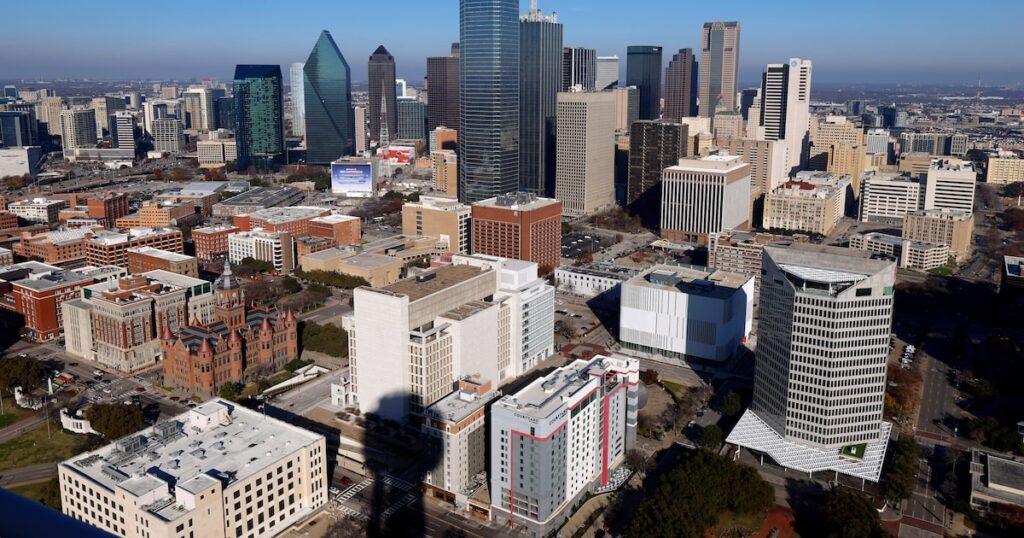The ground beneath Texas’ urban areas, including Dallas and Fort Worth, is sinking at a quicker pace than other comparatively large cities, according to a new study.
In a study published on Thursday by Nature Cities, researchers examined 28 of the nation’s most populous cities.
The data mapped how the phenomenon of land subsidence — a slow-moving setting or sinking often caused by the removal of underground fluids like water, oil and gas — uniquely impacts each place, making them increasingly susceptible to natural disasters.
For many cities around the country and the world, the problem represents “a present and growing hazard with costly environmental, social and economic impacts on urban centers,” Nature Cities researchers wrote.
Although coastal cities are most affected, “a broader spectrum of major cities worldwide…are experiencing major subsidence at rates that necessitate immediate attention,” the study added.
The impacts of subsidence can be felt in damage to infrastructure like buildings, roads and public transportation, experts say. Additionally, areas become more vulnerable to extreme weather events like floods.
Of the cities studied, 25 were found to be experiencing sinking at varying rates, according to the Nature Cities data.
The cities with 98% of its area affected include Dallas, Fort Worth, Houston, Charlotte, North Carolina; Chicago, Illinois; Columbus, Ohio; Denver, Colorado; Detroit, Michigan; Indianapolis, Indiana; and New York.
The three Texas cities exhibited the highest proportion of sinking areas, with more than 70% of their land experiencing subsidence at a rate of 3 millimeters per year. Parts of Houston have been known for sinking at 5 millimeters per year.
The movement of the sinking is measured on a small scale of millimeters per year, but the incremental changes can accumulate over time.
“The latent nature of this risk means that infrastructure can be silently compromised over time, with damage only becoming evident when it is severe or potentially catastrophic,” researchers wrote. “This risk is often exacerbated in rapidly expanding urban centers.”
While land subsidence is often considered solely a coastal hazard due to sea-level rise, it can also threaten inland areas, causing increased risks of flooding and structural damage, according to the study.
Other Texas cities, including San Antonio and Austin, were highlighted in the evaluation of risk to buildings, since the moving land can impact foundations. Most buildings face relatively low risks but more than 29,000 buildings across the 28 cities were classified as “high” or “very high risk.”
At the top of the list with most building at higher risk levels was San Antonio, Houston, Austin and Fort Worth.
San Antonio, Austin and Houston contribute more than 82% of the buildings at very high risk, having 1,515; 706 and 376 buildings, respectively.
This reporting is part of the Future of North Texas, a community-funded journalism initiative supported by the Commit Partnership, Communities Foundation of Texas, The Dallas Foundation, the Dallas Mavericks, the Dallas Regional Chamber, Deedie Rose, the McCune-Losinger Family Fund, The Meadows Foundation, the Perot Foundation, the United Way of Metropolitan Dallas and the University of Texas at Dallas. The News retains full editorial control of this coverage.


